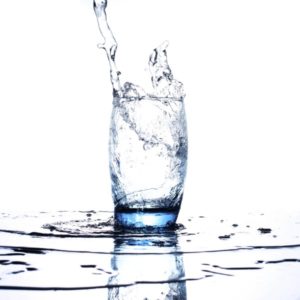Since the early 1980s, the EPA has permitted aquifer exemptions under the Safe Drinking Water Act (SDWA). An aquifer is an area of underground rock that contains or can transmit groundwater. Underground Injection Control (UIC) regulations the EPA has developed allow the Agency to separate certain aquifers from drinking water requirements provided the aquifers do not currently or in the future serve as sources of drinking water. The exemptions allow the aquifers to be used by energy and mining companies for oil, gas, or mineral extraction or for disposal; these activities must also comply with UIC requirements.
According to information the EPA published in January 2017, there are about 3,300 aquifer exemptions nationwide, the majority in Colorado, Montana, Texas, Utah, Wyoming, and Indian country. There are also aquifer exemptions in California, but at the time the information was released, data on the locations were incomplete.
UIC
Typically, a business or a state will apply to the EPA for an aquifer exemption for a type of UIC activity. There are six classes of wells in the federal UIC Program. The EPA indicates that most exemptions requested to date are associated with three of the six classes. About 95 percent of exemptions are for Class II wells in which fluids related to oil and gas (O&G) production are injected. Almost two-thirds of these Class II exemptions for enhanced oil or gas recovery ((EOR), Class IIR), and one-third are for disposal of wastewater (Class IID). A small percentage of exemptions are not specific to EOR or disposal and are designated as Class II rather than Class IID or Class IIR.
About 2 percent of aquifer exemptions are associated with Class III wells, which assist in recovering minerals such as uranium and salts. The remainder are associated with Class I wells used for injection of nonhazardous industrial wastes and other nonhazardous wastes.
Approval and permits
Injection of fluids into an aquifer requires EPA approval of an aquifer exemption and a UIC permit. The EPA approves the aquifer exemption request if it meets the criteria at 40 CFR 146.4. Specifically, for Class I to V wells, the aquifer:
- Does not currently serve as a source of drinking water.
- Will not, in the future, serve as a source of drinking water because:
- It is mineral, hydrocarbon, or geothermal energy producing, or can be demonstrated by a permit applicant as part of a permit application for a Class II or III operation to contain minerals or hydrocarbons that, considering their quantity and location, are expected to be commercially producible;
- It is situated at a depth or location that makes recovery of water for drinking water purposes economically or technologically impractical;
- It is so contaminated that it would be economically or technologically impractical to render that water fit for human consumption;
- It is located over a Class III well mining area subject to subsidence or catastrophic collapse; or
- The total dissolved solids content of the groundwater is more than 3,000 and less than 10,000 milligrams per liter (mg/L), and it is not reasonably expected to supply a public water system.
Expansion
Also, the area of an aquifer exemption for a Class II EOR well may be expanded for the exclusive purpose of Class VI injection for geologic sequestration of carbon dioxide if it meets all the following criteria:
- It does not currently serve as a source of drinking water.
- The total dissolved solids content of the groundwater is more than 3,000 mg/L and less than 10,000 mg/L.
- It is not reasonably expected to supply a public water system.
Petition to amend
Recent years have seen increased interest in aquifer exemptions as the O&G industry has made technological strides in EOR, and more wells are needed for disposal of O&G wastes. This has caught the attention of environmental groups that are concerned the exemptions will threaten future sources of drinking water, particularly as climate change affects the drinking water supply. In March 2016, environmental groups petitioned the EPA to amend the aquifer exemption “to protect underground sources of drinking water.” The petitioners stated:
“In devising new rules, EPA must take account of developments since the existing rules were written in the early 1980s, including increasing demand for groundwater, the rapid depletion of aquifers in many states, the extent to which climate change is likely to exacerbate these problems, improved technologies for water treatment and corresponding increases in the use of desalination of brackish groundwater as a drinking water source, and advances in our scientific and technical understanding of groundwater, especially in the areas of computer modeling and contaminant fate and transport.”
The EPA provides information on aquifer exemptions here. The environmental group petition is here.

